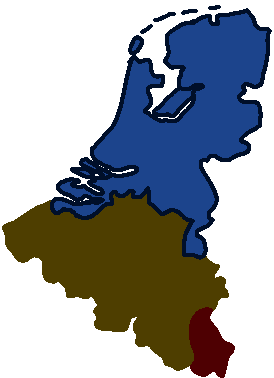Welkom!
The Netherlands is a European country, bordering Belgium and Germany. Often referred to as 'Holland', though this discouraged as Holland only refers to a region of the Netherlands, not the whole country. It's comparable to calling the United Kingdom England.
Yes, England and Holland have been and still are the most important regions of their respective countries, but it could come off as ignorant considering you're not addressing the rest of the country correctly.
Language
The Dutch language is a Germanic language spoken by around 24 million people worldwide. For English speakers, Dutch is relatively easy to learn since both English and Dutch are in the same language group meaning many words are similar. Dutch traditionally had 3 genders (masculine, feminine, neuter) but these are rarely used in practice. The three main articles for nouns are 'de' (the), 'het' (the) and 'een' (a/an).
Inhabitants
The majority of the country is ethnic Dutch, who are descendants from Germanic tribes who've historically lived in the Netherlands for hundreds of years.
Frisians
The Frisians make up the majority of the province of Friesland and are an ethnic minority with their own language, West Frisian. They share ties to the East Frisians who reside in western Germany and the North Frisians in northern Germany, close to the Danish border.
Immigrants
A large amount of Indische Nederlanders (Dutch colonists + mixed Dutch-Indonesians) and some 300,000 returned to the Netherlands from 1945-1949. Some willingly due to the Indonesian government stripping privileges away from Dutch colonial elite (Totoks), discrimination against Dutch or half-Dutch individuals for being associated with colonial rule.
More arrived in the Netherlands from 1957–1958 when the Indonesian government forced some 40,000 Dutch and Indo citizens out of the country when the Netherlands refused to give up some remaining land it held in Indonesia.
Surinamese
In 1975 when Suriname gained independence, many feared an unstable economy or a rising in ethnic tensions between Afro-Surinamese, Indo-Surinamese and others. Around 135,000 people moved to the Netherlands because of this. Even before independence many native Surinamese left for better job opportunities and more also left when the Surinamese state went under a military coup and civil war.
Updates
21/6/25 - created the netherlands page
Caribbeans
Aftter WW2, the Netherlands had a shortage of workers and many from the Dutch caribbeans (Aruba, Curaçao, Bonaire, Sint Maarten, Saba, Statia), mostly Curaçao moved to work in Dutch factories.
Labor migrants and refugees
Primarily from Turkey, Morocco, Sub-Saharan Africans, Middle Easterners and Eastern Europeans moved from the 1960s-70s for job opportunities (Emphasis on Turks and Moroccans, these groups arrived in large numbers and are the largest immigrant groups outside of those with ties to Dutch colonialism, both a population of some 400,000 respectively) or seeking refuge from war (Middle Easterners).
Biking culture

The Netherlands is a part of the BeNElux (a political and economic union) along with Belgium and Luxembourg.
The Netherlands is one of the most bike-friendly countries in the world, boasting around 23 million bicycles total and having over 35,000 km of cycling paths. Cycling is also done throughout every season and weather, all in normal clothes. People also don't wear helmets unless they're a little kid or racing and the country also has dedicated bike parking (fietsenstalling) in most public spaces.
Why
The Netherlands is for the most part extremely flat. Bikes where a luxury when they first came on the market in the late 1800s, yet wehn prices dropped and bikes got mass-produced, biking use rised. In the 1950s-60s when cars became popular (like everywhere else) biking use declined and cities even began demolishing historic areas to make room for wider roads and car parking.
In 1973, Arab countries inside the OPEC (organization for oil export) embargoed the U.S. and its allies, which included the Netherlands, which caused gas prices to skyrocket. The Dutch govenrment started to promote bikes as cheaper alternatives.
Also in the early 1970s, various organizations organized protests, like the 1972 "Stop de Kindermoord" (Stop the Childmurder) where they demanded safer streets because hundreds of children were dying in traffic accidents. The government listened and invested in bike lanes and speed bumps and other measures ever since.